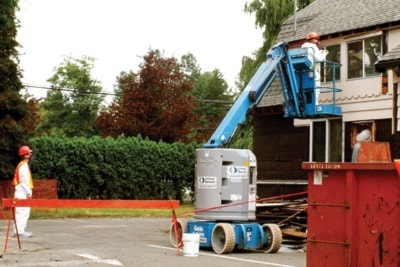With work on the school district’s Family Place project beginning, the City of Parksville will begin interim traffic improvements along Highway 19A.
“We’ve known for a long time it’s a problem traffic area,” acting mayor Chris Burger told The News about the area between Moilliet and Pym streets, as detailed in a recent report from staff.
Council voted to hire a consultant to design two new traffic signals and related road improvements on the highway as recommended in the report by director of engineering and operations Robert Harary, which was based on a traffic study by the Boulevard Transportation Group.
“It’s important to realize we have to do something to manage the traffic in the short term, but no one is saying that’s the end game,” Burger said.
He stressed the council’s motion also directs staff to hire a consultant to develop a phased improvement plan toward the ultimate goal of widening the highway in the 20-Year Capital Expenditure Plan.
The Boulevard study looked at the current situation adjacent to the School District 69 (Qualicum) property at the corner of Bay Avenue, and the impact of the imminent $7 million Family Place development.
The city has intended to address the traffic issues at least since their 2002 Transportation Master Plan, but the preferred method is to fund road work with the development cost charges (DCCs) collected from adjacent projects, giving the city little influence over the timing.
The Family Place, a joint project of three provincial ministries — education, health, and children and family development — made traffic a more urgent issue, though the report projects it will only add 27 trips per peak hour.
Because the project doesn’t need re-zoning, has paid the DCCs, received the building permits and is being done by senior government on their own land, the city has minimal leverage.
The city’s 2010 Transportation Master Plan gives the current operating level of service on that stretch of road an “F” rating on a scale of A to F — F being the worst.
While traffic planners try to avoid “T” intersections without signals, the recent traffic report points out there are five in the space of 500 metres on the two-lane segment of the main road through town, which is otherwise at least four-lanes. The troubled stretch also lacks turning lanes, sidewalks, crosswalks, bike lanes, or space for transit stops.
While the experts agree, as the report puts it, “The ultimate and best solution is to widen Highway 19A in this area with new traffic signals at appropriate intersections with proper provisions for pedestrians, bicyclists and transit stops,” the funds are not available so they reviewed interim options.
They briefly considered the options of roundabouts on the highway, upgrading the signal at Moilliet Street and extending Dogwood Street through two private properties to a new intersection at Moilliet.
They then focused on either extending Temple Street through the school district property, which they couldn’t force, the district didn’t want, and wasn’t much better than the recommendation council accepted.
So the city will install two sets of traffic lights 100 metres apart at Bay Avenue and Finholm Street, synchronized with the signal at Pym Street and begin a long-term process to figure out how to pay for road widening.
With costs estimated around $500,000, which the city has in its existing 2011 roads and traffic signal capital budget, the details will be designed by a consultant and brought back to council.
Working with the city, the school district is willing to provide a pedestrian and bicycle route through the property from Temple, upgrade the green belt along property to a pedestrian friendly walkway, use alternative fuel vehicles, encourage occupants to carpool and request the regional district put a transit stop along property.
District superintendent Candice Morgan said they are excited about the project and some of the solutions they are developing with the city. She promised more details soon, but pointed out the complexity of co-ordinating information between several government departments.
City council supports the Family Place project, which the report from staff points out will be the city’s first LEED certified (environmentally friendly) building and offer many amendments to residents including after hours meeting space.
